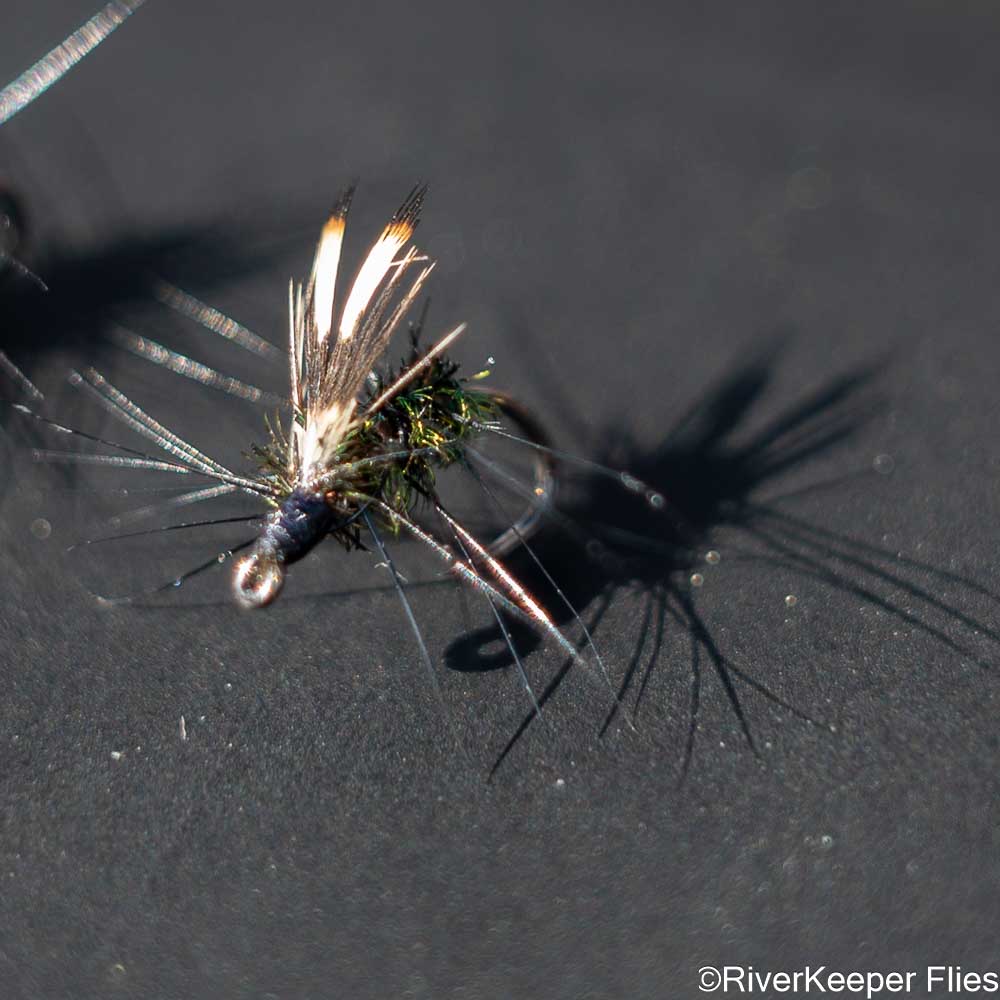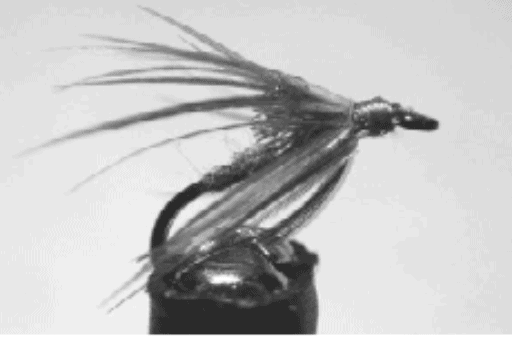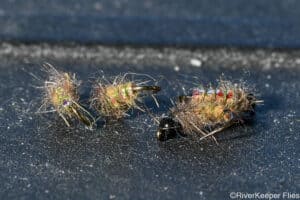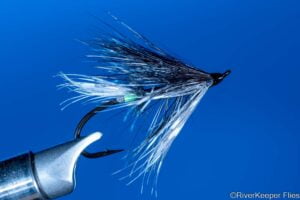This week’s Throw Back Thursday Fly is Vince Marinaro’s Jassid Fly.

I met some friends for coffee last Friday. One of them, Jim Ferguson, was sharing a fly he tied recently I recognized…a Jassid. I asked him if I could take a quick picture at the table and this is the result.

These images aren’t my best by far, but I did the best I could with the restrictions of an outdoor table and no speedlights.
The Jassids are size 16 and from the image appear to be tied with a body of peacock, black body hackle, and jungle cock nail for a wing.
This fly was developed by Vince Marinaro (1911-1986), born in Pennsylvania. He was known as the “dean of Pennsylvania’s Letort Spring Run.”
Marinaro was a corporate tax specialist after graduating with a BS from Duquesne University (1933) and Dickinson Law School (1937). But he made his mark on the fly fishing community with his research and writing.
Here are two book titles you may recognize:
- A Modern Dry-Fly Code (1950, reprint 1970, reprint 2015)
- In the Ring of the Rise (1976)
Marinaro describes his new fly in A Modern Dry-Fly Code that he ties it with an underbody of “greenish-black hackle from a Flemish Giant rooster, tied in open palmer fashion along the back cut away to make a flat table for the jungle cock nail, and a wide V cut away underneath…”
An earlier version appears to be the one Jim tied, using peacock herl for the body. Marinaro states this step is unnecessary as the peacock herl soaked up water and didn’t float as well. The result using only short black hackle below the “shapely jungle cock nail or nails to form an opaque background against which the screening hackle creates an impression of depth and bulk.”
Mike Valla writes about Marinaro in chapter 29 of The Founding Flies (2013), stating the Jassid was his signature fly, imitating a nonindigenous Japanese Beetle which was found in the United States around 1916.
Another source to learn more about Marinaro is from an article in The American Fly Fisher (Spring 2000) entitled Vince Marinaro: On Point of Balance by Gordon M. Wickstom
Enjoy…go fish!
(John Kreft is a participant in the Amazon Services LLC Associates Program, an affiliate advertising program designed to provide a means for sites to earn advertising fees by advertising and linking to amazon.com.)







I really enjoy your comments on the JASSID fly. My fly box has probably 60 of these ties from size 18 to 22. I also believe in just the thread body and sometimes vary the tying thread color underneath. Typically it is black or an orange color. For hackle I use either grizzly, black or brown. As the flies are a bit fragile, I tie them only on barbless hooks. Vince wanted his fly to float in a completely drag, free manner, but interestingly, sometimes when they start to slightly sink into the surface, film and swing slightly, trout will take them aggressively. I’ve come to believe that they are taken for small Diptera emergers that can be somewhat agile in their swimming movements. It’s a great fly, and I spent some late September evenings on upper rock Creek in Montana, when I could catch 20 browns and cutthroats in an hour and a half. Vince always would refer to that kind of Fishing as “pretty Fishing.“
Thanks for the Comment Frank!
John
The book on Marinaro’s rods is called Split & Glued By Vincent C. Marinaro, it is a biography as well as a book on his rods, with the formulas for his rods. Second hand volumes are still available.
The title is playful, the book is by Bill Harms.
I would have said his signature fly was the Thorax Dun. This fly is still great. It is a bit of an enigma as it is so often tied differently, I think even in his two books. What makes is a signature fly is that it evolved from the research he did on optics and how and what the fish first see. Essentially, in it’s most classic form, it approaches nothing more than than a wing. Marinaro wrote about the window, both in terms of the what the fish sees of the angler, but most insightfully what he sees of the fly. Marinaro’s theory was that, at least when duns are on the water, the fish first sees the wing tip as it enters the window, and will rise keeping the wing in the edge of the window, until the fly is in his mouth. It is the Nordon Bombsite of the trout.
I don’t know that trout take flatwing style insects in that way, or whether they just whack them because the legs are fully visible under the water.
Thorax duns are fun to tie, as they rely on commonly available materials, and one can expand the concept to other types of materials and styles of fly.
From the fish view, you can’t really see the JC beauty. Like Jason, I have that stuff in stock. But anything similar will work, similar on the underside, then a few strands of Chrystal on the top.
Vince came up to the Toronto show, in the late 70s, I would guess. I was in my late teens and a very accomplished tier (no good fishing in my area, does that to you). So I would go up to the greats crack open my fly box and offer them a fly. Vince selected a large stone fly that was probably a variation on the Kaufman stone, but based on the materials I had on hand would have been seal fur, and the antenae, and tail were porcupine quills. I only ever made the one, and did wonder if the fish could get past the quills? I thought it was kinda funny, because Vince is known for his delicacy, and his minutia, and he selected this bathyscaph of a fly!
I was delighted decades later when the book on Vince’s rods came out. Gotta make myself one… Still.
Oh, years later I went to the Letort. And I walked up to the upper end of available water, up the branch that is not the cress farm (it was around that time…) There was a fence, and beyond that a little dock, and a man appeared, very pleasant, and he was happy to talk about his property. He had just purchased the property, and he had no idea it was anything particularly special, when he had bought it. I often wonder how tired he must have got of us, over time. But it was nice to see his delight.
How much do you charge for your #18 Jassid fly? I’ve heard a good deal about them. We fish PA waters often. Give me your order information and tentative delivery time. Thanks
The Jassid is an underrated and underused fly. I tie them in #18 and they are extremely productive any time terrestrials are about. I use real jungle cock nails and not only are they gorgeous (to the tyer), but are surprisingly hi-vis. I think most people shy away from them is because they don’t have or don’t want to buy an expensive jungle cock cape. But I used to tie a lot of steelhead and salmon flies, so I already had a cape. But, I only used the big feathers and the small ones were useless for spey flies and such. So, I’m able to make use of those small ones with patterns like the Jassid. Also, the spade feathers actually make really interesting hackle!